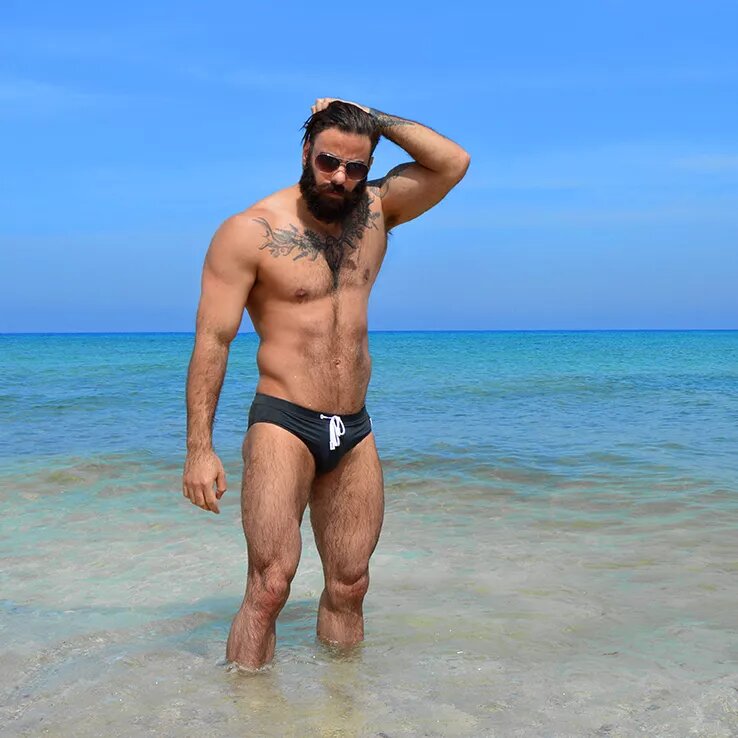
As is known, Lebanese beaches are not only a sphere of recreation, excess and mating rituals, but also a battlefield of values. Regarding this, mostly the racist exclusion of domestic workers and people of colour hit the headlines.[1] Apparently, at the French coast problems of a different nature have recently arisen that also created quite a stir in places far from the ocean: the appropriate swimwear for women.
Like anywhere in the world, as a woman in Lebanon it is not easy to choose a suitable outfit for the beach – you want to make sure to minimize the cat calling while keeping up with the recent trends in bikini fashion, which is indeed rather minimalist.
One calm day during Ramadan, I went to the beach with a couple of friends, including Marwan, whose picture adorns this article. We had already jumped into the water – three men and one woman - when the beach warden suddenly felt the need to restore the public order and started to shout and gesture at us from the shore. The object of complaint however, was not my bikini. He had identified the real threat: Marwan’s body, more specifically his speedos. “It’s forbidden to wear speedos here.” Fortunately, we only had to dwell in the sea for about 20 minutes until a friend joined us with an extra pair of longer swimming shorts – saving Marwan and assuring the security of the other visitors at the beach.
That day we failed to find a logical explanation. Therefore, I’ll hereby try to apply an arbitrary choice of arguments used to justify the recent bans of controversial swimwear in France to a possible ban of speedos in Lebanon:
- At issue are the tight and crotch covering garments named speedos after a popular brand that exhibit a personal taste in fashion. They are worn in the water by some bearded men, who while bathing want to comply with a materialist obsessive physical culture and expose their muscular thighs.[2]
- Wearing speedos is contrary to integration.
- Speedos aren’t “a new type of bathing suit, a fashion,” but “a political project that goes against society” that forces the “subservience of men.”[3]
- Nobody should promote the consumerist propaganda and excuse the “sexist exposure”.
- Speedos are an “immoderate fashion statement” and might spark scuffles, as Lebanon is the target of terrorist attacks.[4]
- Wearing Speedos degrades men and is incompatible with their status within a democratic society in a state of paralysis.
- In the case of accidents or extreme pollution, wearing such a garment could hamper rescue efforts in the water.[5]
- “This is the soul of Lebanon that is in question. Lebanon does not denude a men’s body. Lebanon does not expose half of its population under the fallacious pretext that the other half might enjoy it.”[6]
- Exposing exceedingly muscular thighs or hairy abdominal muscles to go to the beach is not in keeping with our ideal of social relations.[7]
- Men cannot wear Speedos on the beach, because people might harass such men, “disrupting public order.”[8]
- Speedos are “liable to offend the religious convictions or [religious] non-convictions of other users of the beach," and "be felt as a defiance or a provocation exacerbating tensions felt by the community.[9]
Unfortunately, I missed to question the beach warden about it that day. His comment would have probably been such as “I am not talking about banning the wearing of fashion statements at the beach … but ostentatious clothing which refers to an allegiance to sexual orientations which are at war with us.”[10]
What seems to be mental enfeeblement with an utterly racist quintessence in Europe was that day at the beach quite clearly homophobia – and thus a weapon of sexism.